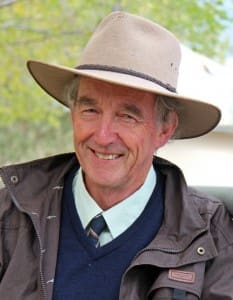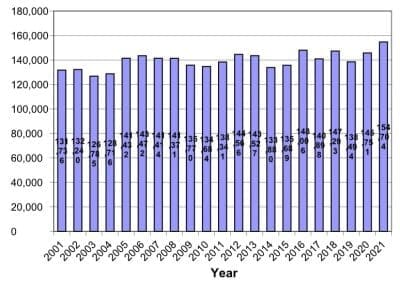BOTH registrations of bulls and females, the number of beef producers breeding registered cattle surged again during 2021, reflecting the boom-times in seedstock and broader cattle industry.
Data released by the Australian Registered Cattle Breeders Association for the 2021 calendar year during Brisbane Show last week shows significant, and in places dramatic rises in breed registrations.
For the 2021 year, primary beef cattle registrations with breed societies reached a record 154,704 head, up 8953 or 6 percent on the year before.
British breeds and their Australian derivatives (like Murray Grey and Lowline) continued their domination of breed registrations, last year accounting for 49.4pc of all cattle registered, totalling 76.501 head.
Tropical breeds (Brahman and derived breeds like Droughtmaster, Santa Gertrudis and others) accounted for a further 22.8pc (35,272 head) and European breeds and their derivatives, a further 12.5pc (19,415 head).
The ‘other’ category (principally Wagyu and Speckle Park) accounted for a 15.2pc share of all cattle registrations last year, or some 23,516 head.
There was a large increase in the number of animals recorded in secondary breed registers in 2021 due to a large increase in secondary registrations by the Wagyu breed. Some 66,362 animals were recorded in Secondary registers in 2021, which was the highest number in the last 20 years. These animals represented the number of non-herdbook animals bred for seedstock production.
Since 2005 the ratio of primary to secondary register seedstock cattle in Australia has been fairly stable at around 70pc primary to 30pc secondary.
Breed comparisons
In a breakdown by individual breeds, Angus continued to dominate primary registrations last year, accounting for a record 49,488 bulls and females. Wagyu was next largest at 20,141 primary registrations, followed by Hereford (18,317), Brahman (11,918), Santa Gertrudis (8161), Charolais (7762) and Droughtmaster (7015).
Continuing their dramatic rise since 2007, Wagyu now sit at number three on the animal registration list, when secondary and primary registers are combined (26,708 head, representing 12.1pc of the total). In 2007 Wagyu breeders registered just 2567 head, compared with 20,141 last year.
Caution should be observed about making breed-wide ‘popularity’ comparisons based on registration figures alone, however.
Click here to view a breed-by-breed summary of primary and secondary registrations for 2021.
Breed society membership
Total Full Membership of the 38 breeds represented as ARCBA members in 2021 reached 10,553, a huge increase on the 6999 Full Memberships in 2020.
 While many breeds showed incremental increases in membership, the dramatic size of the overall increase is largely due to the fact that Angus Australia decided to merge its Full members and Commercial members into a single group. As a result, Angus full membership (including the former commercial members) leapt from 1034 in 2020, to 3288 last year, more than tripling numbers.
While many breeds showed incremental increases in membership, the dramatic size of the overall increase is largely due to the fact that Angus Australia decided to merge its Full members and Commercial members into a single group. As a result, Angus full membership (including the former commercial members) leapt from 1034 in 2020, to 3288 last year, more than tripling numbers.
But organic growth in Angus membership is also clearly evident, with a record 206 Angus bulls sales being staged across Australia this year.
Other breeds also showed solid gains in membership, last year however, with Murray Grey and Red Angus doubling members to 307 and 324 respectively. Within tropical breed ranks, Droughtmasters lifted membership by 12pc to 445, and Brangus expanding numbers by 25pc to 288.
Rapid expansion was seen among European breeds in Simmental, up 78pc to 422 members, while in the ‘Other’ breed ranks, Wagyu continued its dramatic growth lifting membership by another 71, representing a rise of 11pc to 743, and Speckle Park, rising dramatically to 521 members.
Industry in ‘very good shape’
The record levels of cattle registrations in both Primary and Secondary registers in 2021 demonstrated that the registered seedstock industry was in ‘very good shape,’ ARCBA executive director Alex McDonald told Beef Central.

Alex McDonald
“The results reflect just how healthy the broader beef industry is at present,” Dr McDonald said.
“Take Foot & Mouth Disease risk concerns out of the equation, and there is lots of optimism around the industry about global beef demand, future prices and season trends – for the time being at least.”
“Seedstock prices in the past few months have clearly reflected that, breaking all records for sale averages,” Dr McDonald said.
“On property sales averaging $15,000 to $25,000 were unheard of, even a year ago, but are now becoming commonplace.”
- Beef Central publishes its annual summary of bull sale averages and numbers sold across all major beef breeds in late November.

